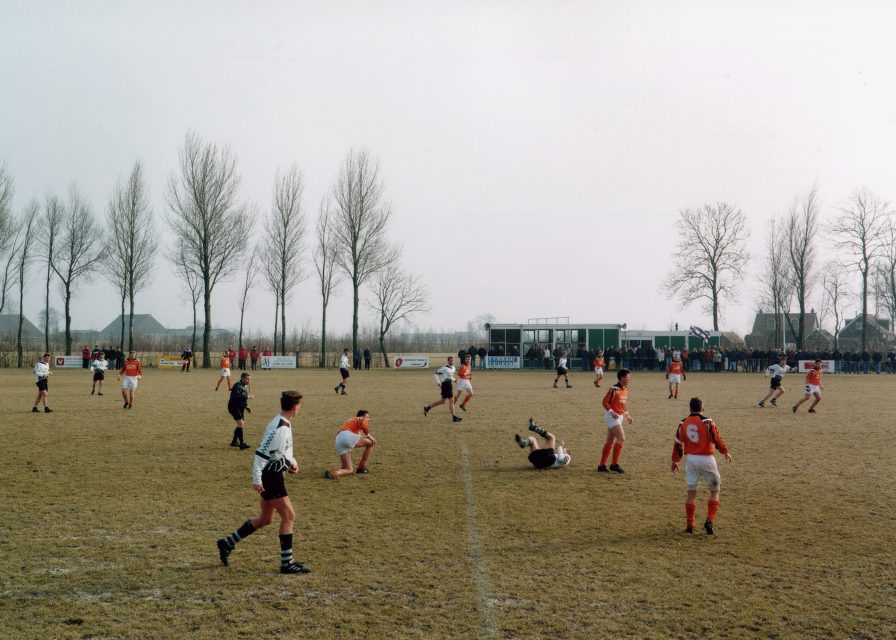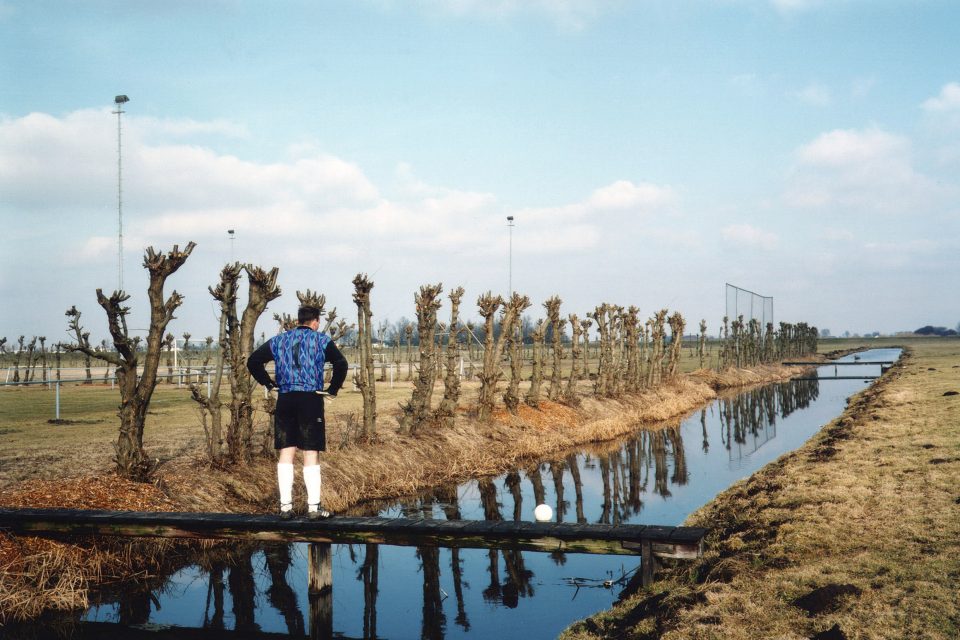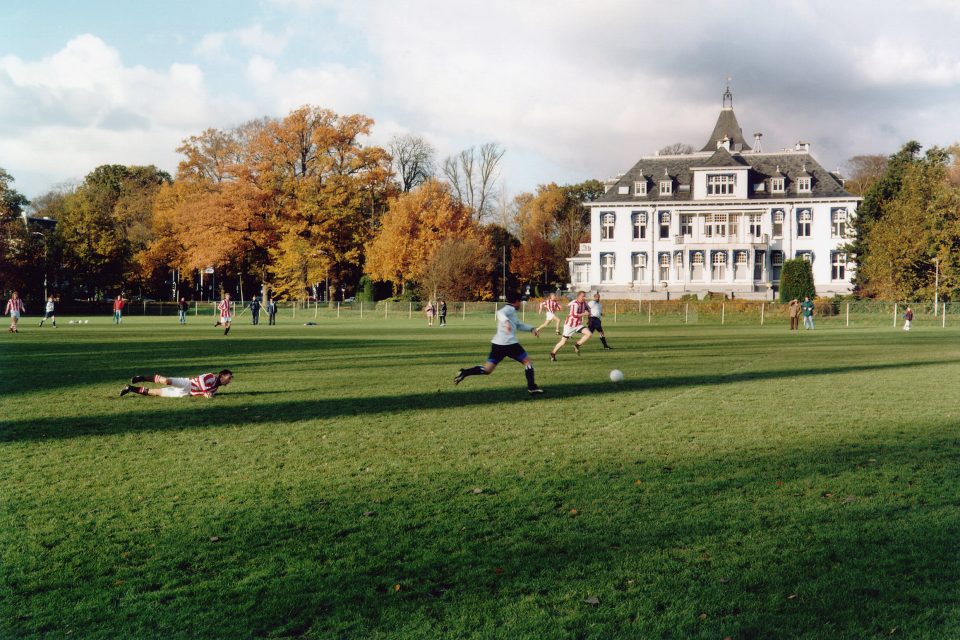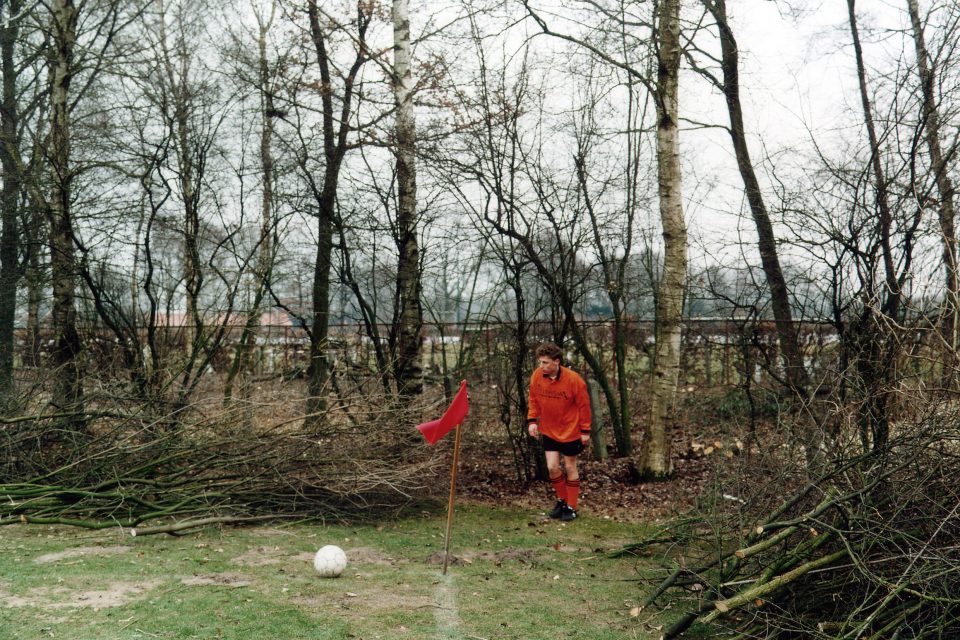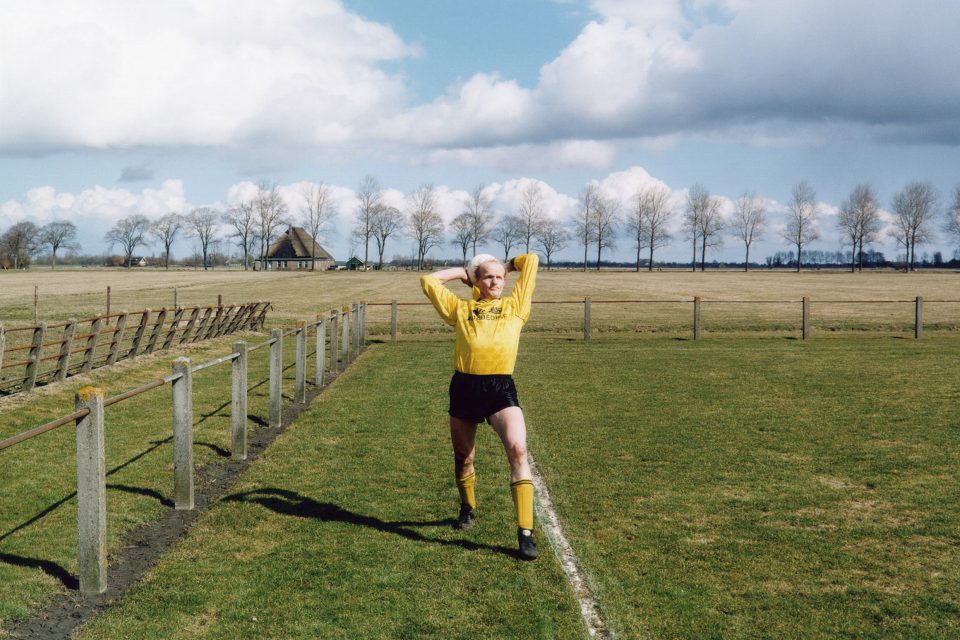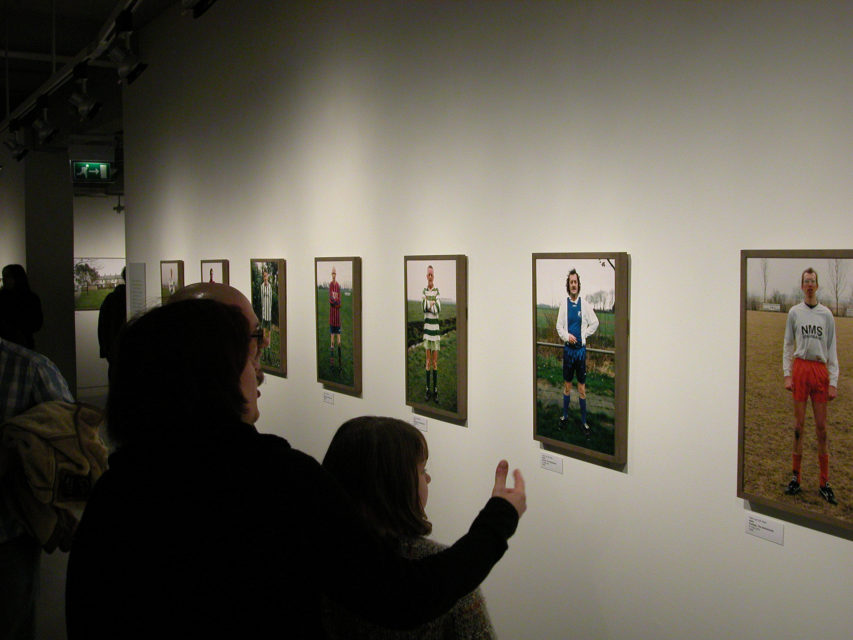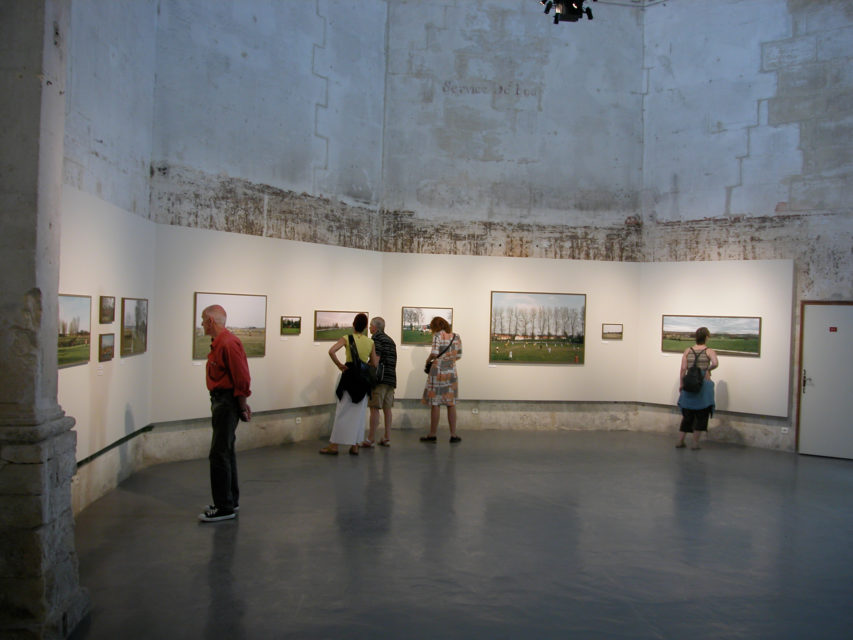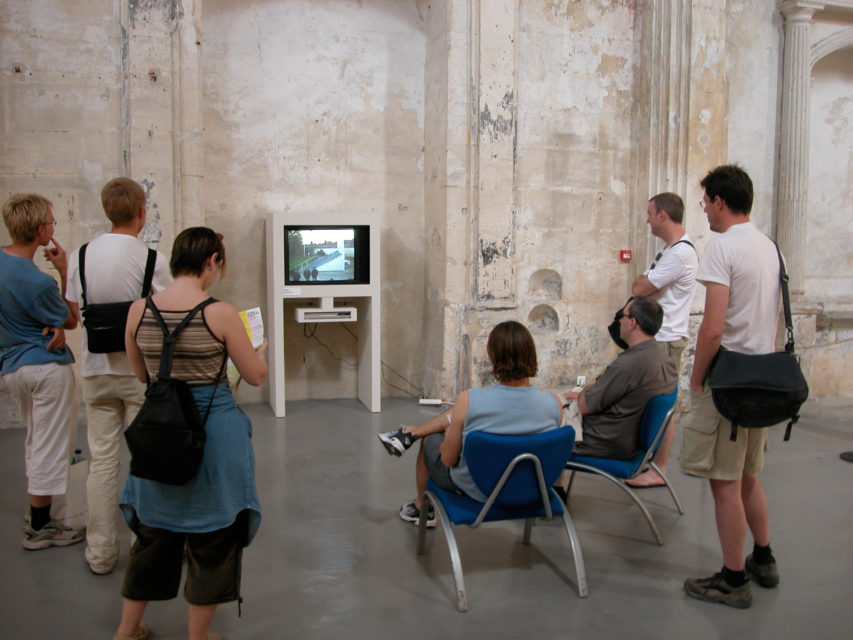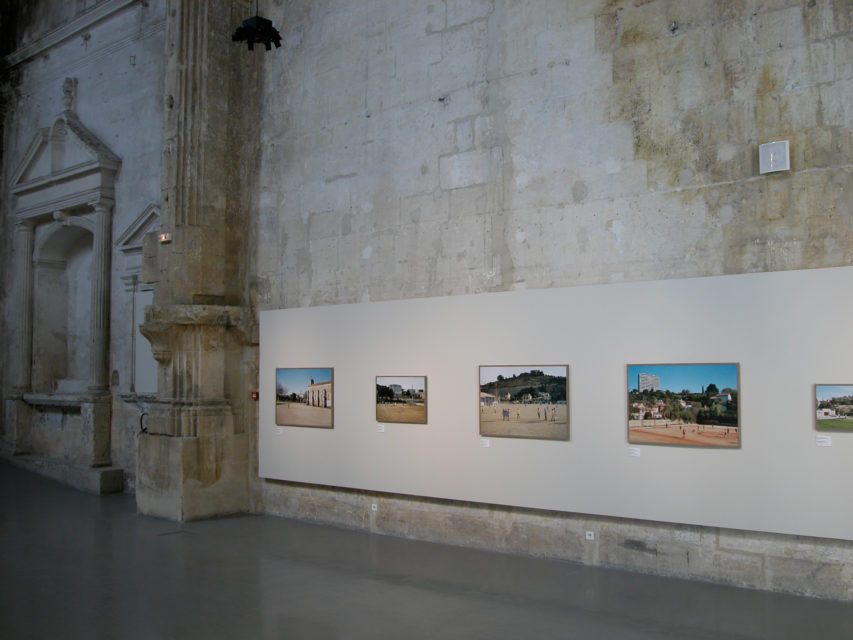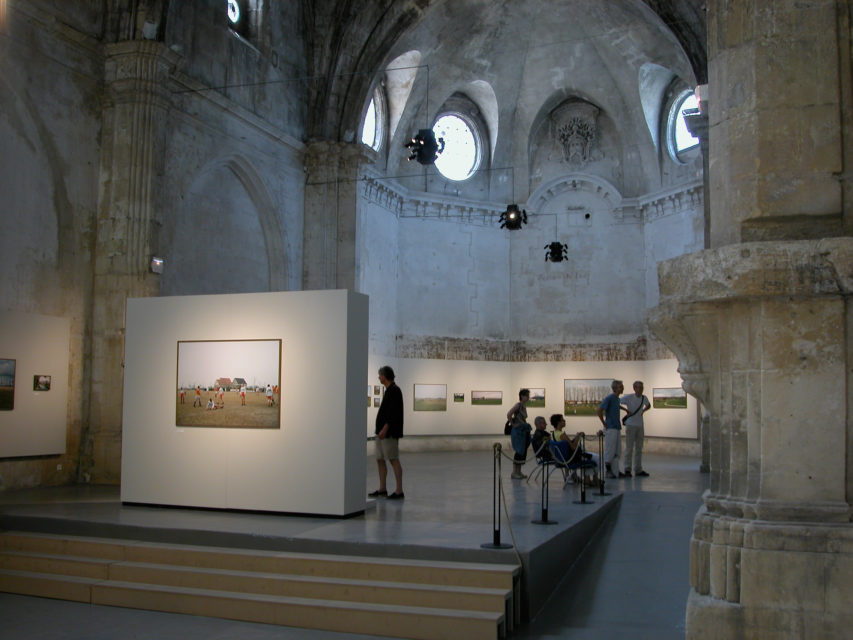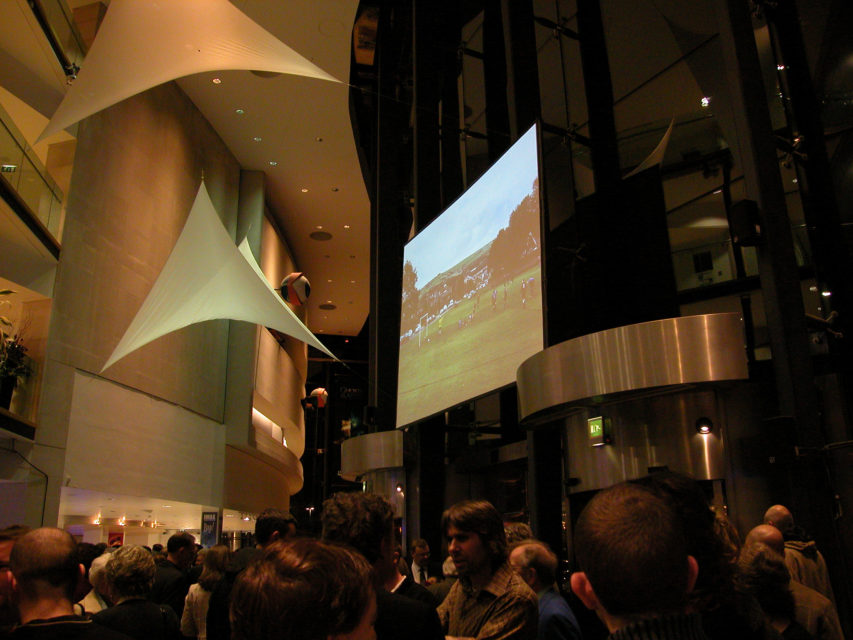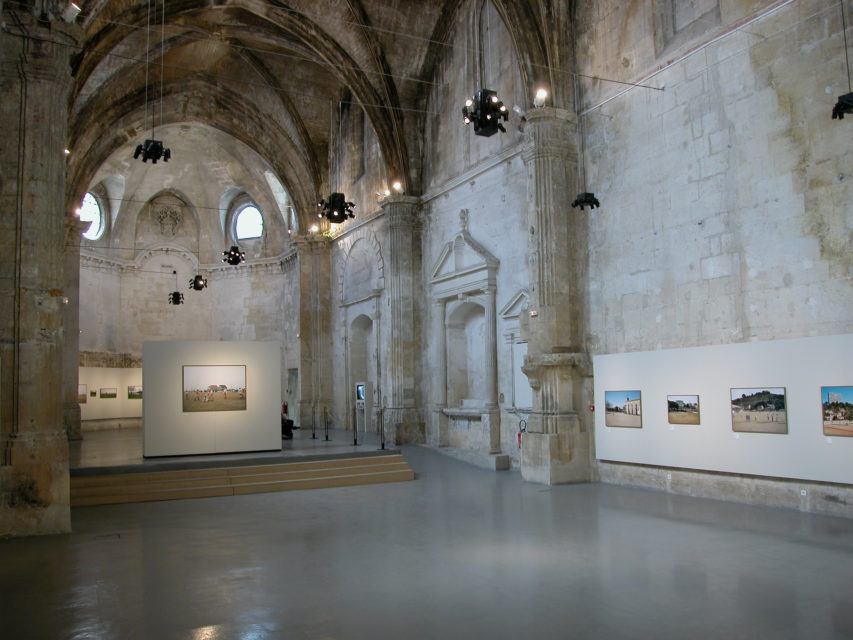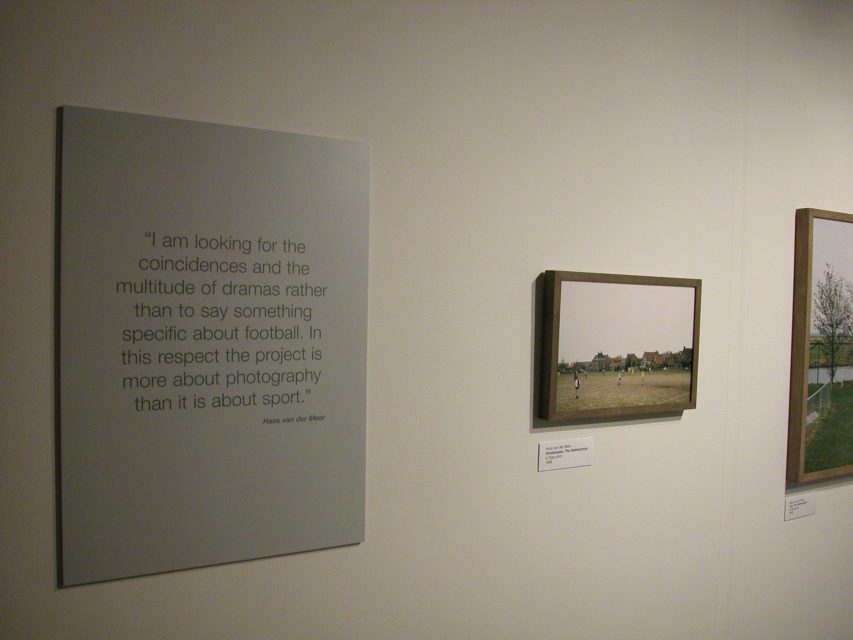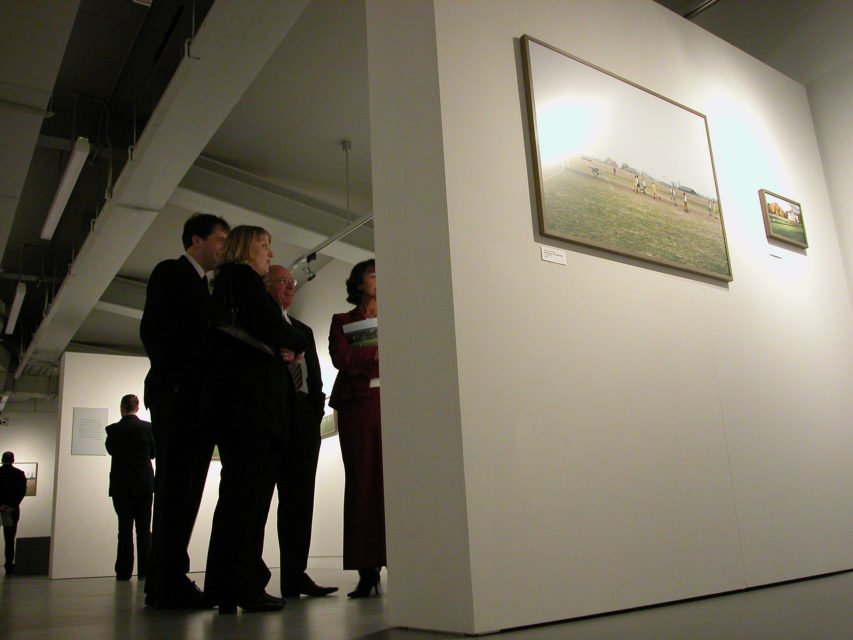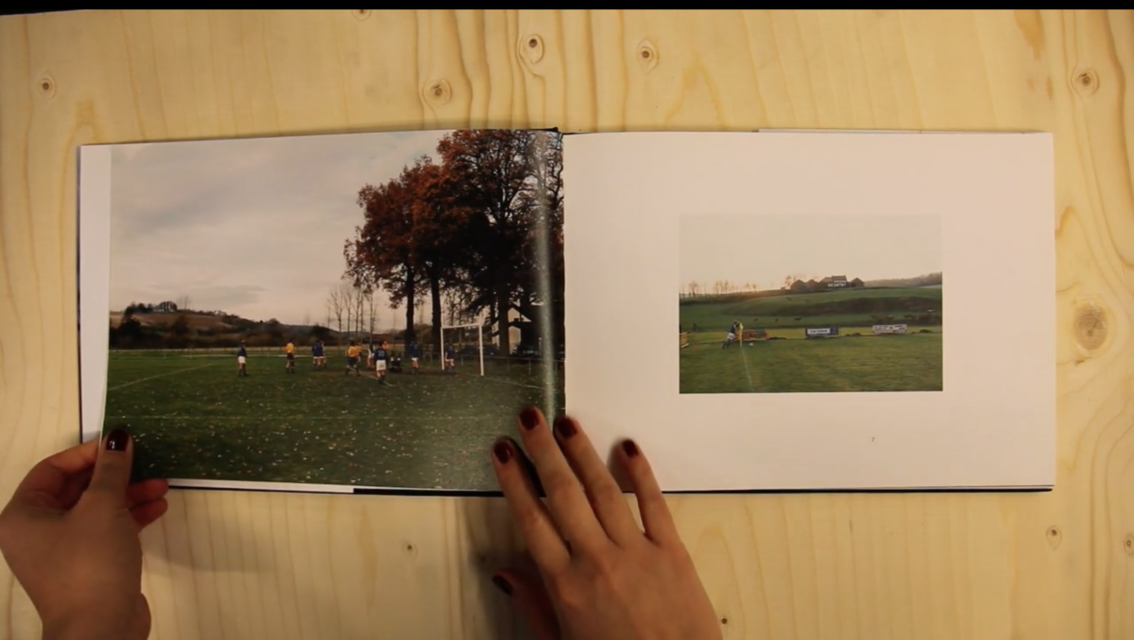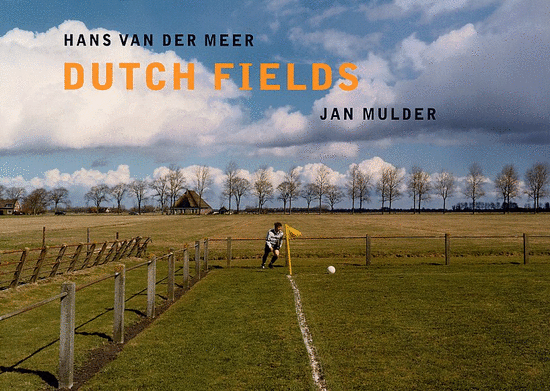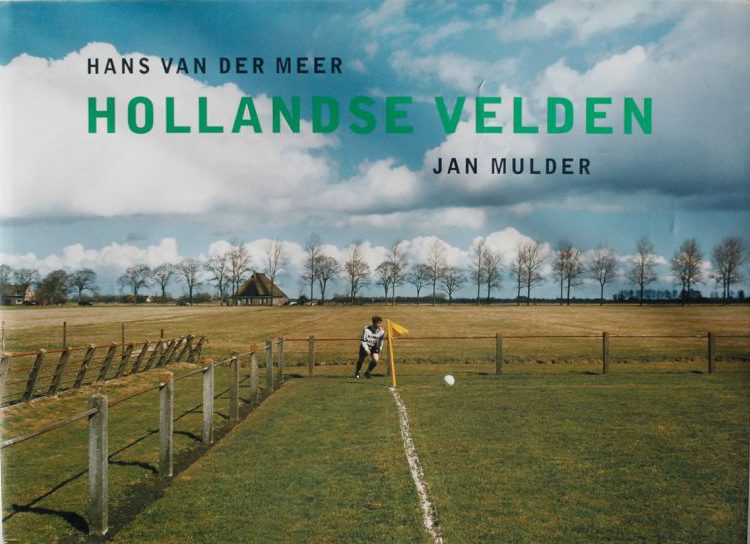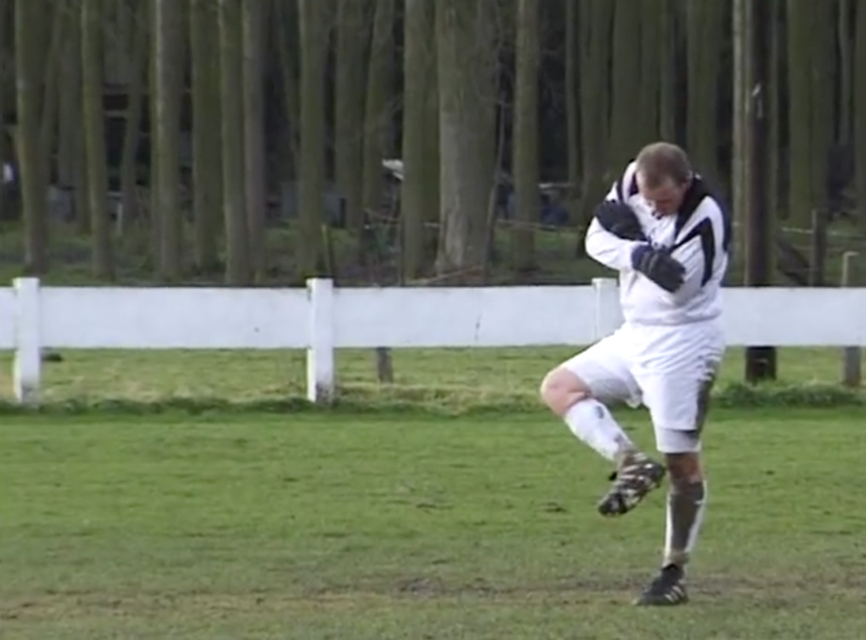Many football associations were established in The Netherlands just after the war. In the small towns a farmer made available a pasture on which they could play. That is, they could play on the weekend, because through the week it was used by cows, pigs or sheep.
Instead of the dynamics, action and drama of professional football, the Dutch photographer Hans van der Meer shows the random football fields. These are not the homes of football association teams playing in sports complexes with well-drained fields built by the community, but those accidental, cosy pitches out among the pastures, or, on the contrary, in the middle of some old urban neighbourhood, pitches surrounded with rows of poplars or with a drainage ditch next to them, with a plank laid over it as a bridge. Van der Meer’s soccer pictures are a cross between landscape photography and mild yet humorous observations of human frailty.
Ever fewer organically grown, casual football pitches of this sort are to be found in The Netherlands now. In even the smallest villages today football associations play in sports complexes built by the community. Well-drained fields are fine to play on, certainly. But everywhere you go, you see the same uniform approach, the same trees around the field, the same locker rooms and canteens. It is just the same as with the new residential neighbourhoods behind which these sports complexes lie: they all look alike.
Luckily, there are still a few of those accidental, convivial pitches: out between the pastures, or, on the contrary, in the middle of some old urban neighbourhood; pitches surrounded with rows of poplars or with a drainage ditch next to them, with a plank laid over it; pitches below a railway embankment or on the edge of the dunes; pitches with a beautiful farmstead in the distance, or in the middle of a woods; pitches behind a church; turnip fields where the wind has free play and where the opponents from the city can never beat the local team from the village.
The game that is played there resembles the rudimentary form of football, as it was played more than a century ago on the Koekamp in Haarlem by the first H.F.C. team. Twenty-two players on a piece of land with a ball, no spectators, at the most a horse that looks up now and then to see what all the shouting is about.
Excerpt from Orange Fields; the neurotic genius of Dutch football by David Winner.
Exhibition
“In 1995, a journalist from de Volkskrant newspaper asked me to take some photos to accompany an article about amateur football. After visiting a few matches, I knew this was a subject I wanted to pursue because it offered me the scope to develop several ideas. I initially started at the top of amateur football, but soon found myself among the lower leagues. I looked for playing fields where the background formed part of the story. On those pitches on the outskirts of villages I sought the game in its original form, as it had begun 150 years earlier in Koekamp in Haarlem, the Netherlands: a field, two goals, 22 players and little more than a horse looking on from a neighbouring pasture. In Dutch Fields, I discovered and explored the possibilities of scenic locations and experimented with different viewpoints. Sometimes the angle was elevated, as in the subsequent, more conceptual series European Fields. But just as often I stood on the ground.”
Book
“On an amateur field outside a village, the environment plays the role of sobering reality. Most amateur players realise at some point that their talent is insufficient to take them to packed stadiums. But thanks to the power of that same imagination, the amateur player does not hear the wind rustling through the poplars around the field, but the cheers rising from the stands when he scores, even though he is watched only by handful of supporters. Once inside the lines, he is transported to a different reality and becomes completely absorbed in his game.
Using a football photo as a means to fire the imagination by increasing the sense of mystery, made the subject of football immediately appealing to me. Everyone knows what they are looking at in an image of an attacker storming towards the keeper, leaving defeated defenders in his wake and a keeper standing tensely in front of his goal. Something has gone horribly wrong in the defence, but you do not see what. We also never know the outcome of the situation. In a photo, the outcome is forever unattainable.
This subject also gave me the opportunity to depict the Dutch landscape behind the football fields. In my opinion, the non-emphatic way in which things are captured in photos is precisely what increases their realism and credibility. My most vivid memories of the period around 1995 are the pleasure and excitement of discovery, of all the things I could do with the subject of football.”
Film
After exploring Dutch fields, Hans van der Meer went on to photograph fields all over Europe. From the fields of Flanders, a film was made, that was presented alongside Van der Meer’s Dutch fields in many of its exhibitions.
